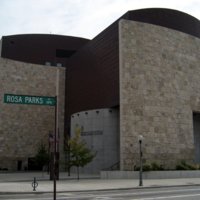
National Underground Railroad Freedom Centre
The National Underground Railroad Freedom Centre opened in August 2004 and has since strived to tell the stories of those who have fought for freedom from the Underground Railway to the present day in the hope of challenging people’s ideas about inclusivity and freedom. The museum also aims to encourage and inspire people to promote and work towards freedom. Its position next to the Ohio River is a poignant reminder of its purpose as this river separated the southern slave states from the free states of the North. The National Underground Freedom Centre examines America’s heritage alongside discussions of contemporary slavery and human trafficking. It also forms part of a group of 'Museums of Conscience' alongside three others across the United States, including the United States Holocaust Memorial Museum. The National Underground Railroad Freedom Centre reveals stories about freedom’s heroes: the men, women and children who challenge inequities to pursue greater freedom for their brothers and sisters. Through a series of rolling ‘special exhibitions’ and its vast collections displayed in several permanent exhibition spaces, the museum highlights the long history of enslavement in America, and its continuing legacy in the modern world.
The centre's most significant artifact is an original slave pen (or prison) originally built in 1830, and thought to be the only surviving example in the world. Visitors can walk through the pen and see some of the names of the people who were once held there. Alongside the pen, which is housed in its own exhibition space on the museum's second floor, there is a permanent exhibition, 'From Slavery to Freedom.' This exhibition covers three hundred years of slavery from its introduction to the Americas to its abolition. 'From Slavery to Freedom' is funded by the Oprah Winfrey Foundation and features a range of collections, including artefacts, archaeological specimens and paintings.
The centre also houses the 'world's first museum-quality, permanent exhibition on the subjects of modern-day slavery and human trafficking'; 'Invisible: Slavery Today' uses the experiences of five individuals who have been caught up in different forms of contemporary slavery and exploitation to highlight the issue in the modern world, as well as including examples of modern antislavery work around the world.
The centre also contains examples of interactive exhibits, with films, hands-on activities and live gallery talks, aimed at providing their visitors with a multi-sensory experience.
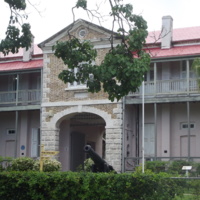
Barbados Museum and Historical Society
The Barbados Museum and Historical Society was founded in 1933. It is a not-for-profit, non-governmental organisation which aims to collect, preserve and interpret Barbadian heritage for its communities. Housed in a former prison, the museum now holds a collection of around half a million objects, dating from prehistory to today, as well as a significant archive.
The museum's permanent galleries explore the history of Barbados and its people through a range of different themes, including social, natural and military history. Colonialism and slavery feature as key themes in several of these galleries. In the Jubilee Gallery, which contains items relating to social history, the exhibition narrative charts four thousand years of Barbadian history. This includes the development of Barbados into a plantation society, life for the enslaved on those plantations and their lives post-emancipation. The Charles A. Robertson African Gallery also reflects on the legacies of slavery with regards to the African diaspora and its heritage within the Caribbean. Here the focus is on the processes of the slave trade, particularly the forced movement of people to the island. Objects in this exhibition reflect different African kingdoms, traditional customs and the diversity of African people.
In addition to its permanent exhibitions the museum also offers a range of learning opportunities relating to the history of slavery in the area. From educational island tours, to school visits and a programme of public events, the museum caters for a wide range of audiences.
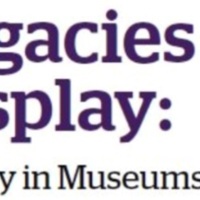
Hanover Museum
The Hanover Museum dates back to the eighteenth century, and is housed in a former slave prison. It was redeveloped in 2011 and now stands as an important symbol of resistance to the people of Jamaica. Situated in the small town of Lucea, between Montego Bay and Negril, the museum sits within a wider landscape of Georgian colonial architecture. Other buildings of historical significance include the nearby church and Fort Charlotte.
The museum houses a varied collection charting the development of the town from the period of plantation slavery to Jamaican independence from British rule. There are paintings, pottery and other artefacts that showcase what life was like for the enslaved. There are also instruments, including stocks, whips and shackles, that highlight the brutal nature of enslavement. In addition, the museum houses a significant collection of archival material, including plantation records and accounts, as well as an early, hand-drawn map of the harbour and surrounding area by Captain William Bligh.
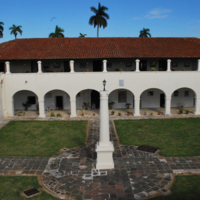
Museo Nacional Ruta del Esclavo
The Museo Nacional Ruta del Esclavo (Slave Route National Museum) is housed in San Severino Castle, in the Matanzas district of Cuba. It opened in 2009, as the product of UNESCO's Slave Route project. Off the beaten tourist track, the museum in the seventeenth-century castle receives few visitors.
The museum itself houses an important exhibition, aimed at showcasing the horrors of the Transatlantic Slave Trade in order to prevent the like ever happening again. The museum has four exhibition rooms with photographs, objects and archaeological items accompanied by interpretive text. These rooms address the origins of slavery, the plantation systems, abolition and emancipation, and the ongoing legacies affecting people of African heritage around the world.
After being selected by UNESCO to house interpretation for the Slave Route project, the museum has supported a number of African cultural groups in the local area, as well as hosting activities for the nearby university. In the exhibition space itself, there are fourteen African sculptures donated by Cuban artist Lorenzo Padilla.
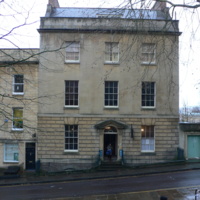
The Georgian House
The Georgian House was built in around 1790 for a plantation owner and sugar merchant named John Pinney (1740-1818), who settled in Bristol when he left Nevis. Two black servants, one bought as a child, the other born on Pinney’s Nevis plantation, also lived and worked in the house: Pero Jones (c.1753-1793) and Fanny Coker (1767-1820). Fanny had been given her freedom at the age of 11, Pero remained enslaved.
The House was presented to the city in 1937 and Bristol City Council has operated the site as a period-house museum since 1939. Rooms are open to visitors across four floors, and it is divided into life above and below stairs. Life above stairs features rooms such as the Dining Room and Drawing Room across the upper three floors, while life below stairs has the kitchen and housekeeper’s rooms in the basement. Information cards provide details about the objects within the rooms including furniture and paintings, and some information on the people who lived there. It is located in central Bristol near the University and Cathedral.
On the second floor there is a small 2D exhibition, in a room next to the bedroom, giving information on the family, the Nevis plantations, and the black servants. Panels have been present in the room since the 1990s, but they were updated and re-installed in April 2018. A large board features the names of the known enslaved people on the Pinney plantations over 200 odd years, and a graphics panel covers nine topics including Bristol and Slavery, John Pinney, Pero Jones, Fanny Coker, Hard Labour and Resistance. They connect the site, and city, to Transatlantic Slavery, through the stories of individual people.
In addition to this display there are implicit and explicit references to slavery throughout the house. Slavery is included on the introductory board and first information card on John Pinney. There are also objects, particularly downstairs, including a sugar cone in the larder and a newspaper discussing the slave trade on the kitchen table. Further audio and information is planned to be added at the house, which will tell more about the slavery connections of the family and house.
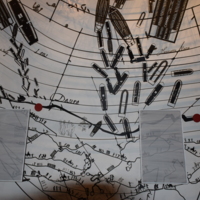
Freedom Park
Freedom Park opened in 2006 having been established as a Legacy Project of South Africa’s second democratically-elected president, Thabo Mbeki. Nine sites were established as Legacy Projects, receiving ample state funding as spaces considered priority sites in preserving national history. Freedom Park was conceived as a national memorial, with a central feature being the 'Wall of Names'; a memorial wall displaying the names of people associated with eight ‘struggle’ epochs which the site considers to define South African history. Elsewhere, evidence of the influence of Mbeki’s ‘African renaissance’ philosophy is prominent. Memorial features in the ‘Isivivane’ area include a symbolic burial ground titled ‘Lesaka’, and ‘Lekgotla’, an African meeting place surrounding the trunk of a uMlahlankosi tree.
A museum, named //hapo (‘dream’ in Khoi) opened in 2013, introducing explicitly didactic content to Freedom Park for the first time. Much like the ‘Wall of Names’, this is grouped into eight ‘struggle’ epochs. It weaves an Africanist narrative beginning by positing the continent as the cradle of mankind, and ending by suggesting that Africans can look to the past to solve the problems of the present, many of which it links with European colonisation. Freedom Park operates a substantial educational and visitor tour programme.
Freedom Park is the only museum in South Africa outside the former slave trading epicentre which is now the Western Cape to cover slavery in any detail. Slavery features as an epoch on both the ‘Wall of Names’ and in //hapo. With the former, it is not clear whether the names displayed are actually those of people enslaved in South Africa, as some of the names are more indicative of transatlantic slave naming patterns. In //hapo, the epoch titled ‘Peopling’ details how Europeans viewed Africa as a market for human beings. A number of artefacts – some of which were created for the museum – depict African life prior to the arrival of Europeans, whilst an installation by the Johannesburg-based artist Clive van den Berg portrays departure. Slavery depicted in //hapo therefore is transatlantic slavery, rather than the very different system of slavery evident in South Africa.
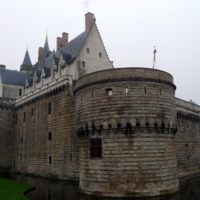
Musée d’histoire de Nantes
Musée d’histoire de Nantes (Nantes History Museum) was originally the residence of the Dukes of Brittany and the castle was restored in the 1990s. It opened to the public as a museum in February 2007. The museum is not wholly dedicated to looking at slavery, but explores the history of the castle and the city. However, it is acknowledged that the Atlantic slave trade is a key part of that history. The themes covered within the museum begin with the construction of the castle in the 13th century, and then follow the development of Nantes as part of Brittany through the ages until the 17th century. The museum also examines trade, the impact of the French Revolution, industrialisation, the two world wars and a contemporary look at Nantes as an ‘Atlantic City’. The museum added several rooms in 2016 that looked with greater detail at modern history. It has been designated a 'Monument Historique' by the French government. In addition to the historical artefacts housed in the museum, interactive and digital media is incorporated throughout as a part of the museum's aim to showcase the history of the city not only through objects and art work, but also contemporary technology.
Slavery is mainly addressed in the exhibition ‘Trade and Black Gold in the 18th Century’, where the displays address the role Nantes played as a key French port for vessels embarking on the Triangular Trade. Objects on display include maps, paintings and a collection of printed canvases produced in Nantes that would have formed a significant proportion of the cargo taken on the first leg of the trade voyage, from France to Africa. As well as examining France’s role in the logistical aspects of the trade, this exhibition also includes interpretation about Haiti. This interpretation has a dual focus, with Haiti as the destination for most of the ships originating in Nantes and the site of the most successful slave revolt in the western hemisphere.
Other exhibitions within the museum also look generally at the larger events in French history and how they changed Nantes’s relationship with slavery. Within the exhibitions on Nantes and the Revolution, the long process of abolition and then re-entrenchment of slavery under Napoleon are discussed in the interpretation. Until 1831 Nantes was still France’s largest slave trading port despite the activity being previously outlawed in 1816. Similar to the Memorial to the Abolition in Nantes, the Nantes History Museum intends to provide a reflection on local history both good and bad.
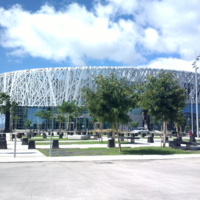
Memorial ACTe
On the former site of a sugar factory, Guadelopue's Memorial ACTe stands as a cultural institution that aims to preserve the memory of those who suffered during slavery, as well as to act as a space for discussion on the continuing repercussions. Part of UNESCO's Slave Route project, its main focus is on the challenges of bondage in the Guadeloupe islands. Memorial ACTe was opened in 2015 by then French President, Francois Hollande, and nineteen other heads of state.
The Memorial ACTe is a unique museum, both internally and externally, through its architectural design. It is also a centre for live arts and debates. It aims to provide interpretation through a variety of viewpoints and disciplines, using not only history but ethnology, social anthropology and history of art as well. The history of slavery and the slave trade are explored through a range of archival material, images and artefacts, with visual and audio installations too.
The permanent exhibition space examines the history of slavery from antiquity to the present day, using objects, reconstructions, visual and audio installations and digital interactives. The temporary exhibition space focusses on contemporary forms of artistic expression in relation to slavery around the world. In addition, there is a research centre where visitors can look into their genealogy, as well as a library and a conference hall.
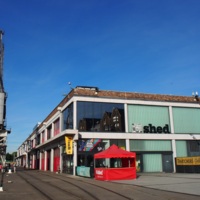
M Shed
M Shed opened in 2011 and is housed in a warehouse on Bristol’s dockside, a clear and tangible link to the history it interprets. The free-to-enter museum focuses on social history, exploring the development of Bristol as a city through people, places and daily life. It is a popular site, attaining over half a million visitors per year since 2013.
Through this local viewpoint, the museum explores Bristol’s involvement with the transatlantic slave trade and the abolition movement in its ‘Bristol People’ gallery which aims to ‘explore the activities past and present that make Bristol what it is.’ Voices from all factions of the slavery debate feature in the display, with proslavery, the enslaved, particularly those who fought for emancipation, and abolitionists all interpreted within dedicated cases. Each case contains a mix of objects, archive materials and text panels to tell the story. Quotations from key figures also bring to life the voices of those who were personally involved: for example, John Pinney, a plantation owner and sugar agent; Hannah More, a writer and Abolition campaigner; John Kimber, a slave ship captain accused (and acquitted) of murder; Silas Told, an ordinary sailor on slaving voyages. These Bristolian voices give different perspectives on how those involved in the trade saw it at the time. Quotations printed around the gallery also provide the views of today’s visitors to the trade. The exhibition also has sections about the legacies of the slave trade within Bristol, particularly in relation to the representation of African or Afro-Caribbean communities in popular culture, the presence of racism in the city, and the legacies of prominent slave owners in some of Bristol's public institutions.
The theme of antislavery also features as the starting point for a display on public protest movements. One case focusses on Thomas Clarkson’s visit to Bristol to collect information against the trade, another on the campaign to abstain from slave-produced sugar in the 18th century and the Bristol bus boycott against racist employment practices in the 20th century. This display then goes on to look at other popular campaigns and protest movements including women’s suffrage, riots, strikes and the Occupy movement. This perspective, situating the abolition campaign as the beginning of a British tradition of society campaigning, is a unique one across UK museums.
In the Bristol Life gallery, the stories of two Black Bristolians look at the new life for the runaway enslaved man, Henry Parker, and the Windrush generation Princess Campbell.
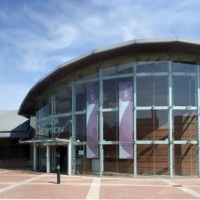
Wedgwood Museum
The Wedgwood company's founder, Josiah Wedgwood I, had the initial idea for preserving and curating a historical collection in 1774. A public museum dedicated to this purpose first opened in 1906, and moved to its present site in 2008. In 2009 the museum won the Art Fund Prize for Museums and Galleries. It underwent further redevelopment in 2015/16. The museum's rich collection of ceramics and archive material tell the story of Josiah Wedgwood, his family, and the business he founded over two centuries ago.
The collections at the museum make up one of the most significant single factory accumulations in the world. They contain a range of things from ceramics, archive material and factory equipment, to social history items that help interpret life in Georgian Britain. Key themes explored throughout the galleries include Wedgwood's links to royalty, the influence of nature on his work and his position as a successful entrepreneur.
On display in the museum also are a small collection of objects which relate to Wedgwood's prominent role in the campaign to abolish the British Slave Trade. Here, the display focusses on the production of the well-known antislavery medallion, which bears the 'Am I Not a Man and a Brother?' image. It also highlights Wedgwood's connection to Olaudah Equiano and the influence of proslavery factions in British society during the eighteenth and nineteenth century.
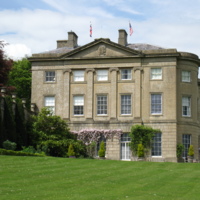
American Museum & Gardens
The American Museum in Britain is housed in a manor house, built in 1820 by English architect Sir Jeffry Wyatville. It is the only museum of Americana outside the USA and was founded to 'bring American history and cultures to the people of Britain and Europe'. It uses a rich collection of folk and decorative arts to interpret these traditions from America's early settlers to the twentieth century. Living history events bring these stories to life, in addition to changing temporary exhibitions which keep the narrative up to date. The museum opened to the public in 1961 as the brainchild of two antiques dealers.
The museum's collections are a rich source of furniture, portraiture and textiles from America, displayed thematically within period rooms acting as gallery spaces. The 'American Heritage' exhibition, charting the history of America through the narration of key events and people dominates a large proportion of this space. Key collections highlights in this exhibition include Martin Luther King's 'I Have a Dream' speech and a range of treasures from New Mexico.
Also contained within the 'American Heritage' exhibition is a small display about slavery and abolition in America. The main focal point of this display is a quilt made by enslaved people on a plantation in Texas. Other themes addressed here include the Underground Railroad, prominent abolitionists and the importance of the Civil War in the eventual abolition of slavery.
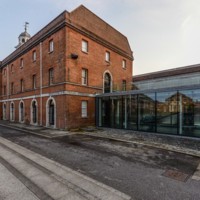
National Museum of the Royal Navy
The National Museum of the Royal Navy is located in Portsmouth’s Historic Dockyard. Its aim is, ‘to make accessible to all the story of the Royal Navy and its people from earliest times to the present.’ The museum, housed in a former naval storehouse, receives almost one million visitors per year.
Through five galleries, the museum charts the development of the Royal Navy and the experiences of the people who served in it. In the ‘Sailing Navy’ gallery, visitors can find out about the initial professionalisation of the navy during the eighteenth century. There are exhibits which discuss rations, health, hand-to-hand combat and available honours.
In this gallery, there is also a section of the display which discusses the other roles played by the Royal Navy, in addition to participation in conflict. The most striking exhibit in this section is a diorama model which depicts the use of the Royal Navy in the suppression of the slave trade, after the abolition of 1807. A little-known story in the British antislavery narrative, the model is accompanied by interpretive text which provides some context about the transatlantic slave trade and the campaign to abolish it. In addition, it also goes some way to outlining the prolonged involvement of Britain in eliminating other European slave trading in the years following 1807. While there are no artefacts used in narrating this story, the diorama itself provides a visualisation of the practice of suppression.
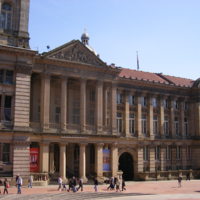
Birmingham Museum and Art Gallery
Birmingham Museum and Art Gallery has over forty display galleries that explore the development of Birmingham as a city, through its diverse communities. Since opening in 1885, the museum has built a vast collection of social history, art, archaeology and ethnographic items. It is one of nine sites managed by Birmingham Museums, the largest museums trust in the UK, whose vision for their service is, ‘to reflect Birmingham to the world, and the world to Birmingham.’ Housed within Birmingham's council buildings in the city's Chamberlain Square, the site welcomes around one million visitors a year.
Slavery and abolition feature as themed displays within the ‘Birmingham: Its People and Its History’ gallery, which dominates the third floor of the Victorian museum. Initially developed as part of the 2007 bicentennial commemoration activities, the displays highlight the contradictory nature of Birmingham’s relationship with the slave trade. Visitors are informed, through both interpretive text panels and collections artifacts on display, about the goods manufactured in Birmingham that were taken to Africa to trade in exchange for human beings. Simultaneously, the presence of antislavery activists in the city is explained, with digital interactives, portraits and abolitionist material culture all illustrating the role of Quakers and other prominent abolitionist figures, including Joseph Sturge and Olaudah Equiano.
The displays also alert visitors as to the existence of modern slavery by a panel headed with the words, ‘Around the world, people are still enslaved today.’ The visitors are then invited to leave their own comments as to how society can help to stop it in their community and around the world.
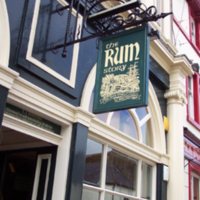
The Rum Story: The Dark Spirit of Whitehaven
‘Rum Story: The Dark Spirit of Whitehaven’ is a museum housed inside the former warehouse, office and shop of the Jefferson’s Rum Company in Cumbria. During the eighteenth and early nineteenth century Jefferson's would have been in receipt of slave-grown produce from the Caribbean, which would have been stored and processed in the museum's building.The museum opened in 2000 as part of the town’s regeneration project and aims ‘to bring history to life.’
On entering the museum, visitors walk through a series of room settings, from the African jungle at the beginning of enslavement, to a reconstruction of a slave ship hold complete with mannequins, and finally plantation offices . These room settings offer a very immersive experience, complete with opportunities for total sensory engagement; scent boxes, samples for tasting on exit and soundtracks all the way through.
The collections consist mainly of archival material which illustrates the company's connection to the Transatlantic Slave Trade, and how that made Whitehaven a prosperous port town. Interpretive panels explain the room settings, and diorama scenes with mannequins illustrate to visitors the way things were during the period, for both the enslaved and the workers in Jefferson's factory. The greatest asset that the museum has is the building itself, which provides a true, tangible link to the trade and its legacy on the local community.
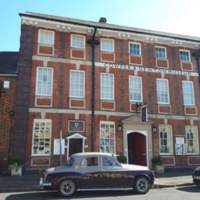
Cowper & Newton Museum
The Cowper & Newton Museum is a very small, local museum managed by a charitable trust and staffed predominantly by volunteers. The museum is situated in Orchard House, the home of poet and author William Cowper between 1768 to 1786. Since it opened in 1900, the museum has focussed on telling the story of Cowper’s life in the thriving Georgian market town of Olney, Buckinghamshire. The museum also examines Cowper's relationship with his friend and neighbour, slave-trader turned ordained priest and abolitionist, Reverend John Newton.
The museum’s mission is for visitors to ‘relive Georgian life in Olney.’ Using items of personal collections relating to both of the museum’s namesakes, the displays bring the house to life in the form of period room settings combined with display cases and interpretive panels. Both Cowper and Newton published writings against the slave trade and corresponded with other abolitionists, including William Wilberforce. The displays provide some context on the slave trade before outlining Cowper and Newton’s involvement in abolition. This is represented through a range of objects including archive material, portraits and furniture both from the museum’s collection, and loaned pieces from Wilberforce House Museum, Hull.
As well as being a theme which runs throughout the whole museum, with Cowper’s ‘The Negro’s Complaint’ on display in the Georgian History Room for instance, there is one particular room on the first floor of the house which focuses predominantly on the slave trade and abolition. Like most of the museums analysed here, the interpretive panels in this display were created using funds made available for the bicentenary in 2007.
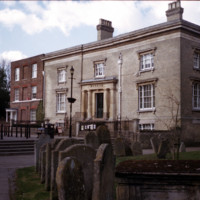
Wisbech and Fenland Museum
The Wisbech and Fenland Museum is one of the oldest, purpose-built museums in Britain. With its origins dating back to 1835, visitors are welcomed into a real ‘treasure house,' with collections housed in original nineteenth century cases. The museum is free to enter and focusses on local history, housing the vast and varied collection of the town’s literary and museum societies. Using these, the museum presents displays on a range of themes relating to key local industries, wildlife, archaeological finds and important people from the area.
One of these important people is Wisbech-born Thomas Clarkson, and it is through him that the theme of antislavery fills several of the largest cases in the main gallery. Using a combination of personal collections, archive material and objects linked to the wider slave trade (notably whips and a manacle), the museum follows Thomas Clarkson’s contribution to the abolition campaign, both in Britain and abroad. The museum also exhibits the narrative of Thomas’ brother John Clarkson who was instrumental in facilitating the movement of freed-slaves from Nova Scotia, Canada, to Sierra Leone.
This display was developed as a larger, standalone exhibition for the 2007 bicentenary entitled ‘A Giant with One Idea,’ but this was reduced following the end of the commemorations as funding was withdrawn.
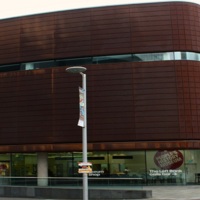
People's History Museum
The People's History Museum (PHM) is Britain’s national museum of democracy, telling the story of its development in Britain; past, present and future. It is located in Manchester, the world's first industrialised city and aims to ‘engage, inspire and inform diverse audiences by showing there have always been ideas worth fighting for’. Attracting over 100,000 visitors a year, with free entry, the museum outlines the political consciousness of the British population beginning with the Peterloo Massacre in 1819. The British transatlantic slave trade and the abolition movement feature in this discussion early on in Main Gallery One. In a small display, the interpretation discusses the role of slave-produced cotton in the rise of Manchester as an industrial powerhouse. It goes on to describe the important role that the people of Manchester had in supporting the abolition campaign. The focus is on the local experience. This is also illustrated with one of the exhibition’s key interpretive characters, William Cuffay, a mixed-race Chartist leader whose father was a former slave. In Main Gallery Two, the displays are brought closer to the present day, other issues explored include anti-racism and attitudes towards migration and multiculturalism. There is a clear link, although not explicitly expressed, in the interpretive text between these ideas and the lasting legacies of Britain's involvement in the slave trade.
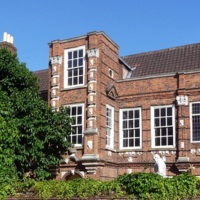
Wilberforce House Museum
Wilberforce House Museum is one of the world's oldest slavery museums. It opened in 1906 after the building, the house where leading abolitionist William Wilberforce was born, was bought by the Hull Corporation to preserve it for reasons of learning and of civic pride. Initially a local history museum, at the centre of Hull's historic High Street, the collections soon expanded through public donations and, unsurprisingly, these donations focussed heavily on items relating to Wilberforce. Today the museum and its collections are owned by Hull City Council and managed by Hull Culture and Leisure Limited. It forms part of Hull's 'Museums Quarter' alongside museums on transport, local social history and archaeology. In addition to the Wilberforce displays, the museum also features period room settings, silver, furniture and clocks, as well as a gallery exploring the history of the East Yorkshire Regiment.
The galleries at Wilberforce House Museum tell many different stories. An exploration of the history of the house welcomes visitors into the museum, followed by displays about William Wilberforce from his childhood, to his work and his family life. These galleries have examples of costume, books, domestic items and even the 1933 Madame Tussauds wax model of Wilberforce himself. Up the grand cantilever staircase, installed by the Wilberforce family in the 1760s, the displays continue. Here they look at the history of slavery and the origins of the British transatlantic slave trade. One gallery contains items that illustrate the richness of African culture prior to European involvement, dispelling the traditional myth that Africa was empty and uncivilised before the intervention of the Western world. Following that, the exhibition narrative goes on to look at the process of enslavement, the logistics of the trading system, the Middle Passage and slave auctions. Again, a wide range of collections are used to illustrate the informative panels. This is repeated in the displays about plantation life and resistance.
Of course no museum about William Wilberforce would be complete without an exhibition on antislavery and the abolition movement. This is extended with two galleries which look at the legacies of such a campaign in terms of modern slavery and human rights today. There are opportunities in these galleries for visitors to provide their comments and opinions, through several interactives, as well as engage with ideas as to how they can actively participate in today's campaign to end modern slavery.
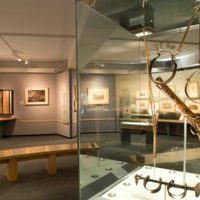
National Maritime Museum
The National Maritime Museum is the largest maritime museum in the world. It forms part of the Royal Museums Greenwich UNESCO World Heritage Site. The NMM houses ten galleries that all showcase Britain’s Maritime History. Its mission is 'to enrich people’s understanding of the sea, the exploration of space, and Britain's role in world history’. ‘The Atlantic Worlds Gallery,' launched in 2007 for the commemoration of the bicentenary, charts the interconnections between Britain, Africa and the Americas between 1600 and 1850. The gallery is about the movement of people, goods and ideas across and around the Atlantic Ocean from the 17th century to the 19th century. The connections created by these movements affected people across three continents, impacting on their cultures and communities and shaping the world we live in today. Four main themes are explored within the gallery, including exploration, war, enslavement and resistance. These displays benefited extensively from the museum's purchase of the Michael Graham-Stewart Slavery Collection in 2002. 'Atlantic Worlds' charts the triangular trade through African civilisations, enslavement and the Middle Passage, and the abolition movement. It recounts the stories of some of the people involved in the resistance movement and the campaign for the abolition of the transatlantic slave trade – including Toussaint l’Ouverture, Olaudah Equiano and Samuel Sharp whose acts of resistance and rebellion were crucial to the turning of European public opinion against the trade. Its narrative also goes beyond the achievement of legal abolition in Britain, to include discussions of the Royal Navy's involvement in suppressing the trade world wide.
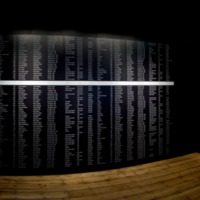
Museum of London Docklands
The Museum of London Docklands houses the Port and River collections of the Museum of London. The aim of these museums is to showcase the growth and development of London, from the Roman era through to the present day. In a period of expansion for the Museum of London, the Museum of London Docklands was opened in 2003 in a Grade I listed warehouse on West India Quay, the historic trading heart of London.
Due to its location in a warehouse which would very likely have stored sugar, and other slave-produced items, the history of the transatlantic slave trade and its impact on London fits well within this space. ‘London, Sugar and Slavery’ was originally produced in 2007 as part of the bicentenary commemorations but has since become a permanent part of the museum. The displays have a local focus, supported through a wide range of objects, and consider the impact of the slave trade on London historically and today.
On entering the gallery visitors are met with a list of ships that traded slaves from the West India Quay- placing them right there in the story. Next there are discussions of the economics of slavery, and indications of how the money made from it changed the city of London forever. The exhibition also includes discussions of resistance, and abolition- centring the movement on the mass movement in the wider population with a case entitled ‘Abolition on the Streets.’ To bring the display up to date there is a discussion of representations of black people in popular culture, with objects including children’s books, film memorabilia, toys and prints, in line with a further piece on racism in London.